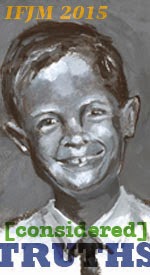
Above: A selection of commercially bound sketchbooks that might be suitable for my 2010 Fake Journal. From top left: wirebound Monteval Watercolor Paper Sketchbook; Moleskine watercolor sketchbook; square, soft-covered sketchbook with drawing paper from Kunst & Papier (blue cover); a fresh, soft-covered Alvin Field Book (yellow cover) of the sort I used last year; and an APICA notebook with ruled pages. Click on the image to view an enlargement.
While Punxsutawney Phil may have emerged yesterday and told us all there are 6 more weeks of winter, there is a more important deadline approaching: International Fake Journal Month 2010 begins on April 1. That gives us fifty six days to gear up.
If you are new to fake journals and the celebration of them during April every year, I urge you to go to the side bar on this blog, "What Is International Fake Journal Month?" That paragraph will provide a link to this blog's first post which explains fake journals and the celebration in detail. Also in that sidebar paragraph you'll find a link to the video of my completed 2009 fake journal, which I kept using an Alvin Field Book like the one in the above photo.
A fake journal is something that is kept in real time, so you may think there isn't a whole lot to do to prepare. Actually, there are a number of things you can do before April to ensure you have success [you actually keep working in it throughout the month] and fun [you actually want to keep working in it throughout the month] with your fake journal.
Here are some helpful suggestions:
1. Start thinking about what you will use as a book for your fake journal this year.
You might consider using a book you have bound yourself. For me, since I bind my own books, I like to use commercially bound books for my fake journal as it helps me distance myself from the "author" of the fake journal—i.e., he/she isn't someone who binds books like I do.
I went to Wet Paint (my favorite art supply store) yesterday to check out commercially available options. They have an extensive selection of sketchbooks and journals. I was weighing the many options when Christina came over to help me. She showed me many books she thought I might not be aware of and remained cheerful when I said things like, "the paper smells when it's wet," "The paper smells like musty plant material right now," and "I really wanted to have pre-printed lines on the page." Suddenly, I realized that since it wasn't "me" keeping the fake journal my personal prohibition against wirebound journals didn't apply and it was back to that area of the sketchbooks. And so it went.
(One of the advantages of supporting your local independent art supply store is that they are exceedingly helpful and they realize that while you may be peculiar you aren't dangerous.)
I came away with a selection of books because I needed to think about it a bit more. I know that I will use these sketchbooks for other projects (perhaps life-drawing) if they aren't picked for a fake journal. Doing additional thinking before you go to the store is always recommended—it's just that for me this is one of the few times a year I get to buy commercially bound journals. I like to bring them home and hold them and test the paper.
2. Consider what media you'll be using.
The media you work with will determine your paper choice in your selected journal. You may elect to create an Altered Book Fake Journal. If so you'll pick a book to alter and the paper in that book will determine which media you'll use. Some printed books may only tolerate dry media. Some printed books may have slick pages suitable for use with only certain inks.
Think of the options in another way as well. Is there a medium you would like to experiment with? Do you want to apply yourself to using pencil, or pen, or acrylics for a month? What speaks to you? Now is the opportunity to take a risk-free venture into experimentation with that medium.
Last year I elected to use the Alvin Field Book. It has water resistant pages that actually took dip pen and watercolor extraordinarily well. (I tested this on the back page because I had never used one of these books before.) I was smitten. That's why I have another one on hand for whenever I have an urge to work that way again. This year however, I don't think I want to work with dip pen. (I work frequently with dip pen as it is, and would like to do something distanced from last year's fake journal.)
The square Kunst & Papier sketchbook in the above photo is a possibility, because I love square formats, but it is not suitable for wet media. Do I want to use only drawing media?
The wirebound Monteval watercolor sketchbook as thick pages that will take just about anything I throw at it and will give me the fun of working in a wirebound journal—something I only very rarely do because I prefer to bind my own books and enjoy working across the gutter of a page spread.
And so it goes. Look at the book you're considering and ask yourself whether or not it will allow you to work with the media you want to use.
3. Consider the page size.
I mentioned in item two how the selection of media will effect your choice of a fake journal. But page size and orientation is also a consideration. Do you like to work in a landscape (wider than it is tall) format, a portrait format (taller than it is wide), or square format? Do you like to work across the gutter on a page spread (which means wirebound journals are not for you)? Do you like to fold the book back when you work with it (which means wirebound books are for you)?
Now ask yourself what does the author of the fake journal like to do? This might surprise you. Working in a fake journal can lead us to explorations we are aching to make, but feel constrained to make in our regular visual journals.
Next, consider the size of each page. Are you used to working large? Do you want to work small on a large page and leave lots of white space? Do you normally work one way with page size and space? If so, a great way to mix things up in your fake journal is to select something opposite to all your regular choices.
And finally, when considering page size also consider whether or not you are going to be posting your fake journal pages on your website or blog, or if you are going to be sharing it in other ways. If you intend to post it is the page so large it can't easily be scanned? Will you have to take digital photos of each page or page spread? Will you have to scan each page in a spread and then knit them together in Photoshop before you post them?
If your intention is to share your fake journal remember that every additional work step you add to the project to share it will actually eat up valuable time you could spend working in the fake journal. You might be best served by not sharing the journal at all until the completion of the project at the end of April—then you can make a video of the completed book. Or you might find that by posting every day you will keep yourself working on the fake journal.
Whatever you decide about how you will share the journal, remember that it will have an impact on your time. Make it as easy as possible on yourself by making a "sensible" choice now.
4. Consider the time you will have to spend on the project in April and the number of pages you will need in your journal.
In 2009 I tested on the back page of the Alvin Field Journal and then cut it out. When I counted the remaining pages it left a title page and exactly 30 page spreads, which meant I could fill one a day. Work and my regular journal lead me to expect that one page spread a day in the fake journal is the limit of what is realistic. Maybe you aren't going to keep your real journal in April (I advise against this, but I know people who have tried it). Maybe you know that you will only be able to fill a page a day.
Whatever realities of life you are facing I recommend that you count on spending no more than one hour a day on your fake journal. Some days it will be less, some days more, but even at an hour, it will mean shifting things in your regular routine. And if you can't find an hour and are going for 15 minutes a day in the fake journal it's unrealistic to plan to fill an entire page spread unless you are working very quickly indeed.
When I looked at the books in the above photograph I found that there were 20 sheets in the wirebound book. Will I work on both sides? One side only? Will I be OK with not having a page a day? When I looked at the Kunst & Papier book I realized there were also fewer than 30 page spreads. Would I be happy working on a spread over a couple days? Maybe that's what this year's author does? That leads me to another crucial consideration…
5. Consider who the author of your fake journal will be.
Since fake journals are created in real time doing elaborate planning about who your author is can be counter productive. It can wear you out before you even get started. However I find that as I start to choose a book to contain the fake journal some inkling of who the author is starts to come to me. I keep these ideas rolling around in my head, so that when April 1 comes along I can hit the ground running with sketching matter and media suited to that author. Comments and other personal details just naturally flow.
Also, if you start considering at this point who the author will be, ideas which seem excellent will have time to show themselves as one-trick-ponies that are not sustainable for a month.
So let some ideas start to jostle around in your head. Just tell your brain to think on this issue and then forget about it.
Getting Ready for International Fake Journal Month
Remember, there are only 56 more days until International Fake Journal Month. This could be just the creative adventure you need this spring. So whether you ponder the above considerations or simply grab a book April first and start in, I hope you'll consider joining me this year for International Fake Journal Month. Remember, Life's so short, why live only one?










